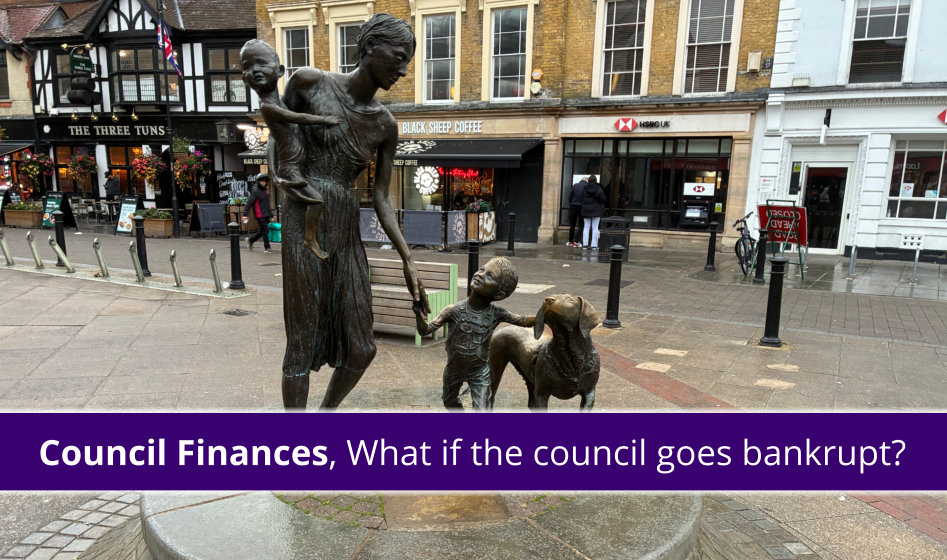
Councils can’t actually go bankrupt, but their equivalent is declaring ‘Section 114’. We understand that once that happens, how the council spends money changes – and the council’s Monitoring Officer and the Chief Finance Officer become responsible for signing off all spending. We have asked them what plans they have: the Monitoring Officer has said he can’t say because discussions are still ongoing with the government, and the Chief Finance Officer didn’t reply to either of our enquiries.
From our understanding and research, assisted with some links provided by the council’s Monitoring Officer Lloyd White, we have created this page and will update it as other information becomes available.
When the council’s auditors issued the Section 24 Recommendations in July, the council was obliged to arrange a public meeting within 30 days. It got special dispensation to extend that period because it fell over the summer holiday period, but it rearranged the September full Council meeting so that it was in the second week of September rather than the last week of September. The next full Council meeting is on 27 November, a week after the next Cabinet meeting. Perhaps we’ll learn something then.
Immediate Impact (First Few Weeks after declaring Section 114)
Initially, residents are unlikely to notice any difference in their neighbourhood services or council activity. The immediate effect is an internal one, where the council is legally forbidden from making new spending commitments and must meet within 21 days to decide on a course of action.
Medium to Long-Term Impacts
After the initial 21-day period, the council must pass an amended budget to bring its spending in line with its income. This is when residents would begin to notice significant changes, which typically fall into two categories:
1. Reductions and Cuts to Council Services
The council will look for savings from the various services it provides. The decisions on what to cut are guided by the council’s legal obligations:
- Non-Statutory (Discretionary) Services are Most Vulnerable: Services that the council is not legally required to provide are most at risk of being reduced or cut entirely. While there is no specific list, these could include:
- Library opening hours or closures
- Leisure centre funding and subsidies
- Maintenance of parks, green spaces and facilities at the Lido
- Street cleaning frequency
- Grants to arts, culture, and community groups
- Youth services
- Statutory (Essential) Services Will Be Protected, but Reduced: The council has a legal duty to provide certain services, with social care for adults and children being a primary example. While these services cannot be stopped, they could be scaled back. We have read that it is “often difficult to determine the minimum level of service provision required”, perhaps where statutory care provision has included additional discretionary care. Residents could experience:
- Stricter eligibility criteria for receiving social care
- Longer waiting times for assessments and support
- Reduced levels of care packages
2. Significant Increases in Council Tax
A major and direct impact on residents is likely to be a substantial increase in council tax next year (it can’t be increased before April)
- Ordinarily, the government sets a limit on how much a council can raise its tax without holding a local referendum (at 5%, which is why rises are often 4.99%)
- However, for councils that have issued a Section 114 notice, the government has given special permission to impose much larger increases.
- For the 2023/24 financial year, several councils that issued notices were permitted to raise their council tax by exceptional amounts:
- Croydon: 15%
- Thurrock: 10%
- Slough: 10%
In summary, while there would be little immediate change, residents would eventually feel the impact through a combination of reduced or withdrawn local services and a significantly higher council tax bill.
